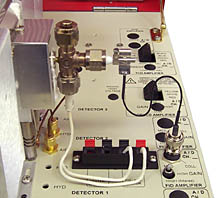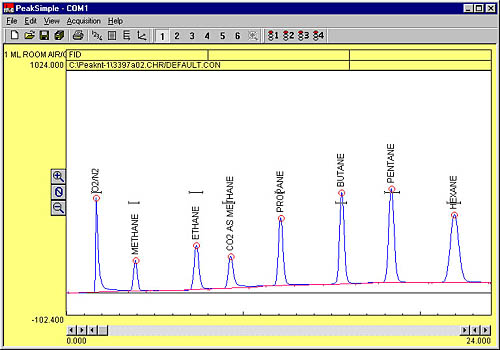|
FID
- Flame Ionization Detector
|
47
|
|
 |
| The flame ionization detector is the most commonly used GC detector, responding linearly from its minimum detectable quantity of about 100 picograms to almost 100%. |
| The FID responds to any molecule with a carbon-hydrogen bond, but not at all, or poorly, to compounds such as H2S, CCl4 or NH3. The FID response is very stable from day to day, and is not susceptible to contamination from dirty samples or column bleed. | |
 |
Our
FID employs a unique ceramic ignitor which can run hot continuously,
immediately re-igniting the flame even when presented with large water
injections or pressure surges from column backflush.
The chromatogram at left shows 250 ppm C1-C6 hydrocarbons (methane through hexane) standard as detected by the SRI FID. CO2, also at 250 ppm, is converted to methane by the Methanizer accessory in the jet of the FID detector. |
|
8690-0010
|
FID detector
|
£1,824.00
|
|||
|
8690-0082
|
Methanizer
accessory, in jet, for low CO & CO2
|
£912.00
|
|||
|
8690-0070
|
Internal "whisper quiet" air compressor for 220V air compressor, order 8690-2270 |
£552.00
|
|||
|
8670-0150
|
FID
ceramic ignitor element, 12VDC
|
£72.00
|
|||
47